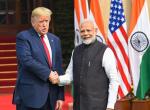Despite all the efforts made by the government of Nepal, the protests against the newly promulgated constitution by the Madheshi ethnic community continue unabated mostly in the Terai region of the country. The Madheshis have a feeling that the constitution is more regressive than any of the six constitutions made in the country since 1950s. Today the political situation is so tense that none of the political workers of major political parties who signed the constitution are in a position to enter into the Terai region so easily. Even Bidya Bhandari, the President of the country, was strongly opposed by the Madheshi leaders on this ground when she visited Janaki Temple at Janakpur.
Had the constitution been promulgated on ‘consensus’ rather than on ‘majoritarian’ principle, there would not have been any political crisis in the country. It was not that Nepal’s nationalist elements and foreign friends had not made the country aware of this impending crisis. Indian Prime Minister Narendra Modi had also suggested the Nepalese leaders to make the constitution inclusive by addressing the concerns of all the communities.
Unfortunately though, the constitution was made in haste to satisfy the ego of certain political leaders. The Madhesh-based political parties who represent sizeable sections of the Nepalese population were totally excluded in constitution-making process. Discussion on different clauses of the constitution was superficial. The constitution was promulgated unilaterally by the major political parties in the Constituent Assembly, which was biased against the Madheshis.
In the seven-province model in the new constitution, the ancestral land of the Madheshis was divided into pieces with a view to marginalizing them further politically and economically. Also, the electoral constituencies of both the Houses of Parliament i.e. the House of Representatives and National Assembly were based more on geographical area rather than the population. There was no provision to ensure representation of the Madheshis and other marginalized groups in the state mechanism. And the citizenship related provisions was made discriminatory as the spouses of the Nepalese marrying foreigners and their children were given the status of second class citizens.
When the Madheshis found that their aspirations had not been addressed in the constitution, the only option left for them was to organize protest demonstrations in the Terai region of Nepal. During the protests since August last, the four-party alliance of Madheshi Front leaders have largely stopped the movement of transport services, closed the shops, industries and all other economic activities. The government offices in most of the Terai districts have been made non-functional. In addition, the main trading routes at the Nepal-India border have been blocked by the Madheshi Front cadets, which have created acute shortage of goods, including oil, gas and other essentials all over the country.
So far 51 protesters have been killed during the protests in the Terai region, thousands of people have been injured and many more have been forced to take asylum in India. Yet, there has not been any serious effort on the part of the government to resolve the crisis through meaningful dialogue with Madheshi Front leaders. Instead, India is being blamed for the economic blockade of Nepal. But India has made it clear that it has not officially or unofficially imposed economic blockade on Nepal. India also maintains that the lack of inclusivity in the Nepalese constitution is one of the major reasons for the political instability in Nepal.
In an important development, however, the government of Nepal has taken a decision in its emergency cabinet meeting in Kathmandu on 20th December, 2015 to amend the constitution that was promulgated three months ago on September 20, 2015. The amendment proposal came out with three-point roadmap with provisions to ensure proportional representation of the Madheshis in all state organs and to allocate Parliament seats on the basis of population and geographical region. Besides, the proposal also had provision to form a high-level political committee to re-demarcate the provincial boundaries within a period of three months.
Nepal’s major political parties, including the Nepali Congress, the CPN-UML, UCPN-Maoist and RPPN-Nepal are in support of this amendment proposal. They want to resolve the crisis in Madhesh through this mechanism. Even the Government of India has welcomed Nepal government’s decision to amend the constitution. India considers this measure as a step in positive direction and hopes that this could create a base for the resolution of the present political impasse in Nepal. In this context, the spokesperson of India’s External Affairs Ministry said, “We urge all Nepali political forces to demonstrate necessary maturity, flexibility to find a satisfactory solution to the Constitutional issues through constructive dialogue in an agreed timeframe.”
However, the Madhesh Front leaders out rightly rejected Nepal government’s three-point roadmap on the ground that it was “vague, abstract and visionless.” They feel that such a roadmap would not address the concerns of the Madheshis and other marginalized communities in the country.
Suspicion of the Madhesh Front leaders towards the intention of government is not untenable. As far back as in 2008, the government of Nepal had signed an agreement with the Madheshi leaders for granting them one Autonomous Madhesh Pradesh in Terai with right to self-determination. But later on the government backtracked from its own commitment.
If the major political parties can promulgate the constitution in the Constituent Assembly within three days, there is no reason why the demand of the Madheshis for the formation of one or two provinces in Terai cannot be met instantly. There is no need to buy three-month long time to re-demarcate the state boundaries. The general feeling among the Madheshis is that the government would never allow them to have one or two Madhesh provinces in their heart land of Terai if they call off the agitation.
There should be no hitch in amending the constitution in a way that the electoral constituencies are re-drawn on the basis of population, if the government is really serious about addressing the crisis in Terai. On this basis, half of Nepal’s 165 electoral constituencies for the House of Representatives would be in the Terai region. Even in regard to the National Assembly, the system of representation should not be based on the numerical strength of the provinces but on population basis. In the absence of such kind of provision, each of the six states in the hills will have 48 members; while Madhesh with only one state would have only 8 members. As such, they will always continue to remain marginalized, though the population in the Terai region forms nearly 51 per cent of the country’s total population.
Similarly, the government is vague in its amendment proposal as to how it wants to ensure proportional representation of the Madheshis in each organ of the state. Also, there is a lack of commitment on the part of the government to make necessary correction in the citizenship and language related issues, which is of major concern to the Madheshis.
Nepal can really emerge as a model not only among the South Asian countries but also globally if the constitution becomes acceptable by each section of the society. But the government is trying to impose the amendment of the constitution on the Madheshi people on the basis of its majority in the Parliament almost in the same way as the constitution was promulgated on the basis of its strength. If done so, it will be the repetition of the same mistake again and it will take the country nowhere.
Of late, India has emerged as a de facto facilitator because the government of Nepal presented its three-point proposal to New Delhi and then shared it with Madheshi Front leaders. However, the implementation of the constitution is the greatest challenge in Nepal and it will remain so until the constitution is made inclusive both in letter and spirit. So it is likely that the agitation in Terai would continue until the provincial boundaries are re-demarcated, electoral constituencies are formed on the basis of population, due mechanism is honestly put forward for proportional inclusiveness in all state organs and correction is made in the clauses related to citizenship and language. It will be important to incorporate the wishes and aspirations of each concerned sections of the society while amending the constitution. This historic opportunity should be taken with a sense of mature responsibility realizing the fact that it is for the first time that the people of Nepal, through their elected representatives, have come out with constitution for themselves. The representatives of the people do not have the option to fail in this exercise. Posterity will not forgive them for this. There is a need now than ever before to evolve consensus in amending constitution in a spirit of give and take and put Nepal back on the path of peace, prosperity and development.
Professor Jha is Executive Director of Centre for Economic and Technical Studies in Nepal.
Published Date: 4thJanuary 2016, Image Source: http://newsworldindia.in
(Disclaimer: The views and opinions expressed in this article are those of the author and do not necessarily reflect the official policy or position of the Vivekananda International Foundation)










Post new comment